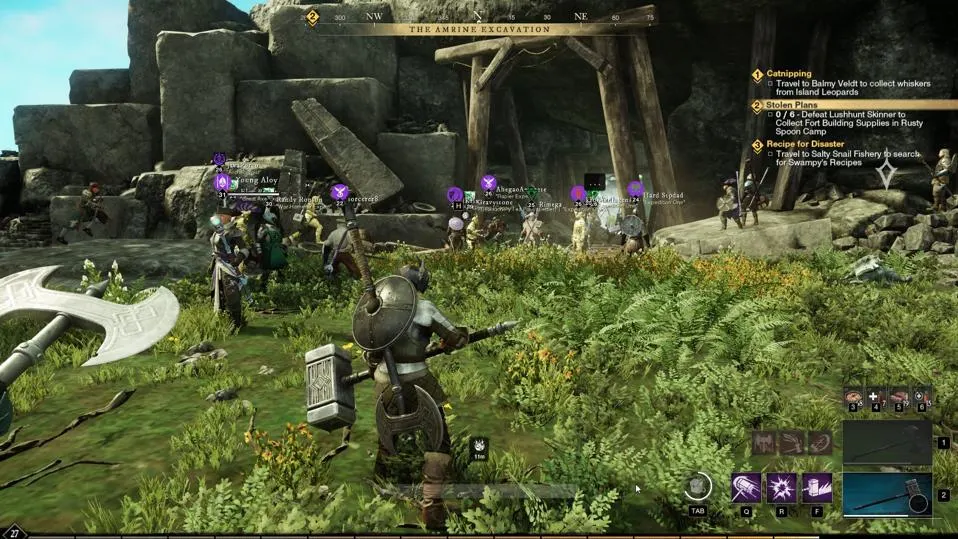Introduction
Capcom has long been a titan in the gaming industry, known for its innovative titles and immersive gameplay experiences. Among its most iconic franchises is Resident Evil, a series that has defined the survival horror genre for decades. In recent years, Capcom has been relentless in bringing Resident Evil to Virtual Reality (VR), allowing players to experience the terror and thrill in a more immersive way. This article delves into how and why Capcom continues to push the boundaries with VR adaptations of Resident Evil, examining the technology, the motivation, and the impact on players and the industry.
The Evolution of Resident Evil in VR
Resident Evil 7: Biohazard – A Pioneering Step
Resident Evil 7: Biohazard marked Capcom’s first major foray into VR. Released in 2017, it was a bold move that paid off spectacularly. The game was fully playable in VR on the PlayStation VR (PSVR), offering a first-person perspective that heightened the horror experience. The game’s success in VR was due in large part to its atmospheric design, claustrophobic environments, and intense gameplay, all of which were amplified by the immersive nature of VR.
Technical Innovations
Capcom’s dedication to creating a seamless VR experience for Resident Evil 7 required significant technical innovation. The development team optimized the game’s graphics to maintain a high frame rate essential for VR to prevent motion sickness. They also reworked the control scheme to be intuitive and responsive within a VR setting. These efforts ensured that players felt genuinely part of the eerie world of Resident Evil, contributing to the game’s critical and commercial success.
Resident Evil Village – Expanding the VR Horizon
Following the success of Resident Evil 7, Capcom continued to explore VR with Resident Evil Village. Released in 2021, Village pushed the boundaries even further. The game featured improved VR mechanics and utilized the advanced capabilities of the next-gen PSVR2, offering better graphics, faster loading times, and more interactive environments. This not only made the game more immersive but also showcased Capcom’s commitment to leveraging the latest VR technology.
The Motivation Behind Capcom’s VR Push
Enhancing Player Engagement
One of the primary reasons Capcom continues to bring Resident Evil to VR is to enhance player engagement. VR provides a level of immersion that traditional gaming cannot match, making players feel like they are truly inside the game. This increased immersion can lead to more intense emotional responses, making horror games like Resident Evil even more impactful. By placing players directly into the terrifying environments, Capcom ensures a more memorable and engaging experience.
Staying Ahead of the Competition
In an industry as competitive as gaming, staying ahead of the curve is crucial. By embracing VR, Capcom positions itself as a forward-thinking company willing to invest in emerging technologies. This not only attracts a tech-savvy audience but also sets a benchmark for other developers. Capcom’s success with VR can inspire other companies to explore similar innovations, fostering a culture of technological advancement within the industry.
Expanding the Franchise’s Appeal
Bringing Resident Evil to VR also helps expand the franchise’s appeal. While traditional console and PC gamers make up a significant portion of the audience, VR attracts a different demographic. By offering VR experiences, Capcom can reach new players who might not have otherwise engaged with the series. This expansion of the audience base is beneficial for the long-term growth and sustainability of the franchise.
The Impact on Players and the Industry
Player Reception
The reception to Resident Evil’s VR adaptations has been overwhelmingly positive. Players praise the heightened sense of immersion and the new layers of fear and excitement that VR brings. Reviews highlight how VR transforms familiar gameplay elements into something fresh and exhilarating. The first-person perspective, combined with VR’s 360-degree view, makes encounters with enemies more terrifying, as players can hear and see threats from all directions.
Critics’ Reviews
Critics have also lauded Capcom’s efforts in VR. Many reviews of Resident Evil 7 and Village in VR highlight the seamless integration of VR mechanics and the game’s ability to maintain high levels of performance. Critics appreciate the attention to detail and the significant improvements in visual fidelity and interaction. These positive reviews not only boost the game’s reputation but also validate Capcom’s investment in VR technology.
Industry Influence
Capcom’s success with Resident Evil in VR has a ripple effect on the gaming industry. It sets a precedent for other developers, encouraging them to explore VR possibilities for their titles. This can lead to a broader adoption of VR technology across various genres, enriching the gaming landscape with diverse and immersive experiences. Additionally, Capcom’s achievements can inspire advancements in VR hardware and software, driving the industry forward.
Challenges and Future Prospects
Technical Challenges
Despite the successes, developing VR games comes with its set of challenges. Ensuring a smooth and immersive experience requires overcoming technical hurdles such as motion sickness, graphical fidelity, and control responsiveness. Capcom has shown a commendable ability to address these issues, but continuous innovation is necessary to keep up with evolving technology and player expectations.
Future Prospects
Looking ahead, Capcom shows no signs of slowing down in its VR endeavors. The company is likely to continue exploring VR for future Resident Evil titles and potentially other franchises. Advancements in VR technology, such as improved headsets and more sophisticated motion controls, will enable even more immersive and compelling experiences. Capcom’s ongoing commitment to VR will likely inspire other developers and contribute to the mainstream adoption of VR in gaming.
Conclusion
Capcom’s persistent efforts to bring Resident Evil to VR have significantly impacted the gaming industry and player experiences. By leveraging VR technology, Capcom enhances player engagement, stays competitive, and expands the franchise’s appeal. The overwhelmingly positive reception from players and critics alike underscores the success of these endeavors. As Capcom continues to innovate and push the boundaries of VR, the future of immersive gaming looks promising, with Resident Evil leading the charge into new and exciting territories.
Appendix: Detailed Reviews and Player Testimonials
Resident Evil 7: Biohazard VR Review
- IGN: “Resident Evil 7’s VR mode is a masterclass in horror immersion. The atmosphere, coupled with VR’s heightened sense of presence, makes this one of the scariest experiences in gaming.”
- GameSpot: “The shift to a first-person perspective and the use of VR breathe new life into the Resident Evil series. It’s terrifying, exhilarating, and incredibly well-executed.”
- Player Testimonials: “Playing Resident Evil 7 in VR is unlike anything I’ve experienced. The fear feels real, and the sense of being hunted in the Baker house is intense.”
Resident Evil Village VR Review
- Polygon: “Resident Evil Village in VR showcases the future of horror gaming. The detailed environments and interactive elements make the game more immersive and terrifying.”
- Eurogamer: “Capcom has outdone itself with Village in VR. The improvements in VR mechanics and the utilization of next-gen technology create an unparalleled horror experience.”
- Player Testimonials: “Village in VR is a game-changer. The sense of scale and the ability to look around the environment freely add a new dimension to the horror.”
By continuously refining VR technology and gameplay, Capcom has set a high standard for VR experiences in gaming. The company’s dedication to innovation and player engagement ensures that Resident Evil will remain a cornerstone of the VR gaming landscape for years to come.
Capcom Keeps Bringing Officially YouTube Channel
Frequently Asked Questions
What is Resident Evil VR?
Resident Evil VR refers to the virtual reality versions of the popular Resident Evil games. These adaptations allow players to experience the horror and action of the series in an immersive VR environment, enhancing the game’s atmosphere and intensity.
Why is Capcom focusing on VR for Resident Evil?
Capcom is focusing on VR for Resident Evil to provide a more immersive and engaging experience for players. VR technology enhances the horror elements of the game, making encounters more intense and creating a deeper connection to the game world.
Can players switch between VR and non-VR modes in Resident Evil VR games?
In most Resident Evil VR games, players have the option to switch between VR and non-VR modes. This flexibility allows players to choose their preferred way of experiencing the game, catering to both traditional and VR gamers.
What future plans does Capcom have for Resident Evil in VR?
Capcom has expressed interest in continuing to explore VR adaptations of Resident Evil games. Future plans may include VR versions of upcoming titles, updates to existing VR games, and new VR-exclusive content. Capcom aims to leverage advancements in VR technology to further enhance the Resident Evil experience.



